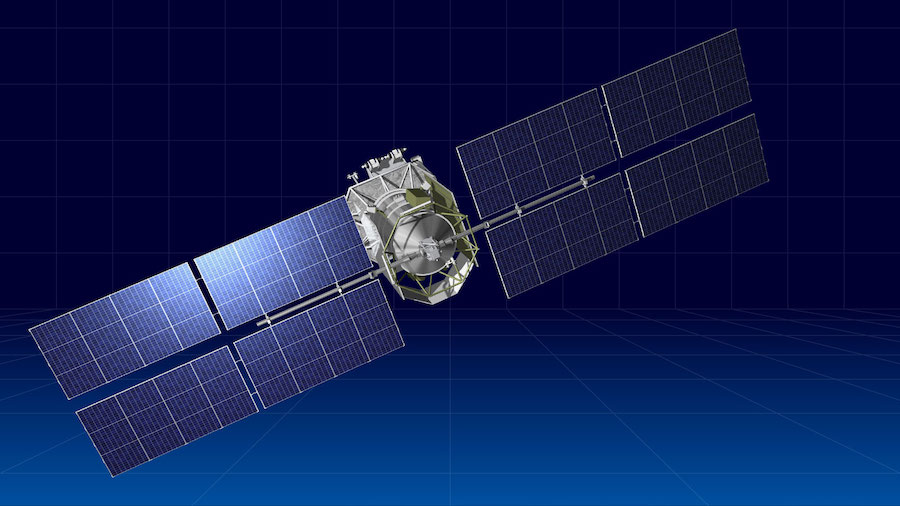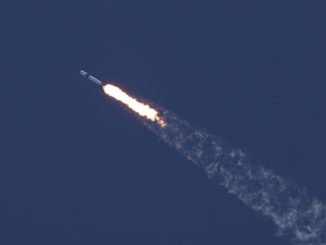Video credit: Russian Ministry of Defense
A Russian military communications satellite rode a Soyuz rocket and Fregat upper stage Thursday into an orbit stretching nearly 25,000 miles (40,000 kilometers) above Earth, successfully launching after a one-month delay to replace a suspect third stage on the Soyuz booster.
The Soyuz-2.1a rocket lifted off with a Meridian M communications satellite from the Plesetsk Cosmodrome in northern Russia at 0824:54 GMT (3:24:54 a.m. EST) Thursday, according to the Russian Ministry of Defense.
After taking off from the military-operated spaceport, the Soyuz booster headed southeast from Plesetsk over Russian territory and dropped its four liquid-fueled first stage boosters, core second stage and payload shroud in the first five minutes of the mission.
The Soyuz third stage ignited to place the mission’s Fregat upper stage and the Meridian M spacecraft on a suborbital trajectory. After separating from the Soyuz third stage, the Fregat main engine was expected to fire three times to maneuver the Meridian M spacecraft into an elliptical, or egg-shaped, orbit ranging between roughly 600 and 25,000 miles (about 1,000 kilometers by 39,700 kilometers) above Earth, with an inclination of 62.8 degrees to the equator.
The launch was delayed from Jan. 24 due to an electrical problem detected in the Soyuz rocket’s third stage. Russian teams elected to replace the third stage with a new unit, pushing back the launch date by nearly a month.

According to the Russian Ministry of Defense, the Fregat upper stage deployed the Meridian M satellite into its targeted orbit, and ground teams from the Russian Aerospace Forces took control of the new spacecraft.
The defense ministry said Thursday ground controllers established a stable communications link with the satellite, and systems on-board the spacecraft are functioning normally.
The Meridian spacecraft are manufactured by ISS Reshetnev, a Russian space contractor, as replacements for a previous generation of Molniya communications satellites. The Russian contractor says the Meridian satellites weigh around 2.1 metric tons, or 4,630 pounds, and can operate for at least seven years in space.
Thanks to their elliptical orbits, Meridian satellites can link Russian ground forces, aircraft, ships and command centers in the Arctic, Siberia and the North Sea, outside the reach of stable communications coverage through geostationary satellites over the equator.
In one example of the Meridian fleet’s communications mission, the Russian Defense Ministry said the satellites relay signals between coastal stations and vessels and ice reconnaissance airplanes traveling along the Northern Sea Route in the Arctic Ocean.

With Thursday’s mission, Russia has launched nine Meridian communications satellites since 2006 to begin replacing the Molniya family of data relay platforms. One of the Meridian satellites was lost in a Soyuz launch failure in 2011, and another was released into an off-target orbit in 2009.
Thursday’s launch sent the second upgraded Meridian M-class spacecraft into orbit. The first of the new batch of Meridian M satellites launched in July 2019.
The Meridian satellites are a part of Russia’s Integrated Satellite Communications System, working with the Russian military’s Raduga, or Globus, military data relay satellites in geostationary orbit.
Email the author.
Follow Stephen Clark on Twitter: @StephenClark1.



